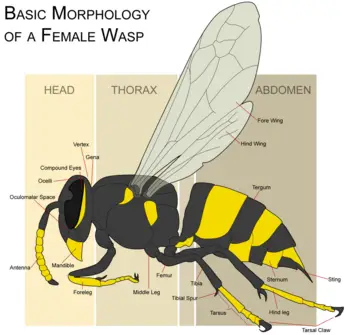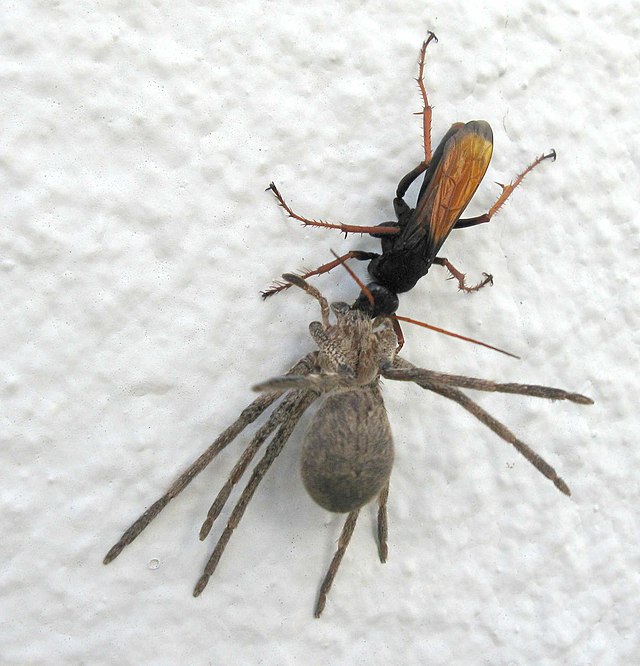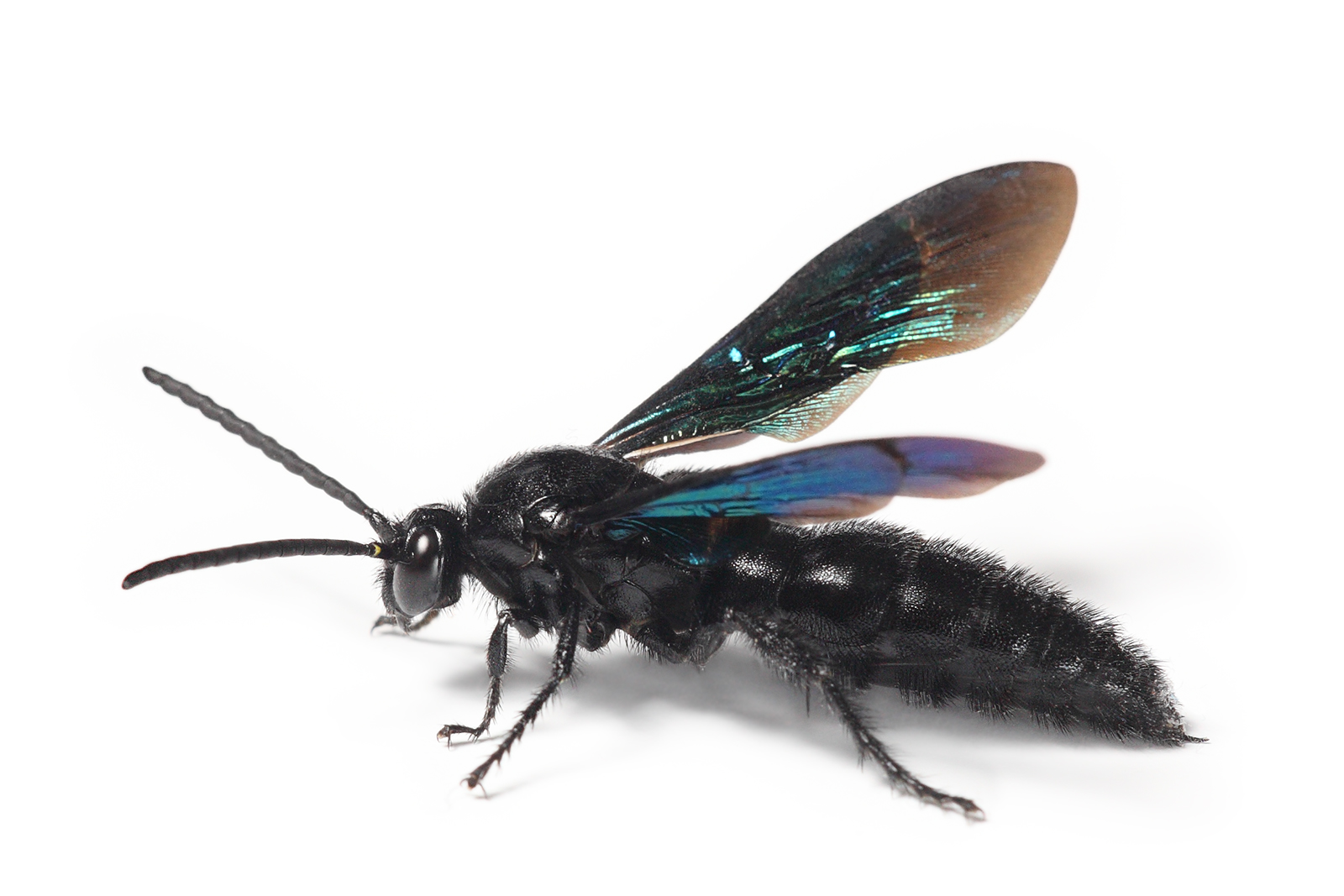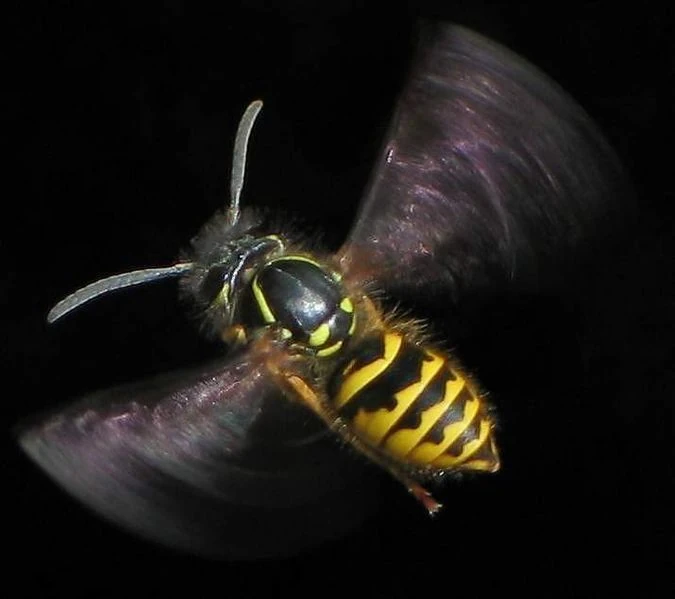wasp life cycle wikipedia
These colonies typically only last the spring and summer and are not used again. On average the normal worker wasps lives for 12-24 days.
As she builds her nest the cells are constructed and she lays an egg in each one.

. The wasps produce a chemical which repels ants and secrete it around the base of the petiole to avoid ant predation. In total it takes approximately 28-48 days from egg to adult although the length of time spent in each stage is determined by environmental conditions. The most common social wasps are paper wasps yellow jackets and hornets.
In many societies it is marked by ceremonies at puberty. Diagram illustrating the life cycles of Greenhouse whitefly and its parasitoid wasp Encarsia formosa. The structure of an incipient nest.
Life Cycle of Wasp. Arun2009 on Oct 2 2010 Over a period of eight days the wasp larva consumes the roachs internal organs in an order which guarantees that the roach will stay alive at least until the larva enters the pupal stage and forms a cocoon inside the roachs body. The adults feed on nectar.
Unlike many other families in the order Hymenoptera wasps in this family are solitary and nest alone. The queens that survive their hibernation wake up as the weather warms and look for a place to build their new nest. True hornets can be distinguished from other vespines by the form of their head.
Each nest will produce around 10001500 new queens. Life cycle means the stages a living thing goes through during its life. After pollination there are several species of non-pollinating wasps that deposit their eggs before the figs harden.
In total it takes around two months for the paper wasp to. Their populations are characterized by colonies within papery nests either above or below ground composed of hexagonal cells for their larvae. They develop from eggs into larvae then pupa and finally adults.
1 Queen lays Eggs. This small braconid wasp is black with two pairs of wings. She generally selects sheltered places such as dark.
A female wasp will search the ground and tree trunks for a spider and upon finding one will sting it paralyzing the spider. The Lifecycle of a Wasp. The fertilized female wasp queen hibernates during the winter season.
Nest and Life Cycle. After remaining in the pupae stage for nearly two weeks they finally emerge as mature adults. She looks over the growth of these first eggs from which sterile female worker wasps emerge.
It has open cells and a cylindrical column known as a petiole attaching the nest to the substrate. Hornets live in Europe Asia Africa and the Americas. They help in building and expanding the nest around the queen.
Pupation takes 8-18 days before an adult worker wasp emerges. These life cycles can vary depending on the different types of wasps but for most cases the queens lifespan is around 10-12 months. Life Cycle and Diet.
Crabro the nest is founded in spring by a fertilized female known as the queen. A single-mated queen emerges from hibernation in the early spring. The queen wasp chews wood materials and spits the remaining parts which is used for making the nest.
They can reach up to 55mm 55 cm 22in in length. The nest is made from chewed wood fibres mixed with saliva. The queen hibernates and if she makes it through the winter begins a new nest afresh once spring rolls around.
Hornets are the largest of the social wasps. The life cycle of social wasps. After the female wasp lays her eggs and follows through with pollination she dies.
After five moults over about 15 days each larva spins a silken cap over the cell and pupates. Wasp nests are not reused each year so there are no active wasp nests in the Spring. The reproduction of the gall wasp is partly parthenogenesis in which a male is completely unnecessary and partly two-sex propagation.
Like most insects the wasp goes through the four distinct life stages which are an egg larvae pupae and finally adult queen or worker. The eggs that are laid in this nest are fertilized one by one using the stored sperms by the queen. Wasps native to North America in the genus Dolichovespula are commonly referred to as hornets eg baldfaced hornets but are actually yellowjackets.
A queen wasp found in a loft. Wasp inserts its egg into a whitefly larva that has reached its third developmental stage egg hatches and the young wasp larva eats the whitefly nymph from within. The queen wasps emerge after their hibernation period is over and start building a nest for themselves.
Whats distinctive about wasps is the adaptation of the ovipositor for the parasitoid lifestyle. Emerald cockroach wasp - Reproductive behavior and life cycle Hacker News. Once the spider is paralyzed the female wasp will make a burrow or take the spider to a previously made burrow.
In most insects the. In some cases the process is slow and the changes are gradual. Adult male wasps and workers die in the winter largely for lack of food.
The Life Cycle of a Wasp. Once these eggs have been laid the existing queen will not lay any further eggs. The length of the tube specializes in reaching where the mother lays the eggs.
The larvae go through several developmental stages known as instars until finally entering their pupae stage. The Wasps Mature and Leave the Nest. A solitary female queen starts the nest.
Further when flying a bee builds up an electrostatic charge and as flowers are usually well grounded Colony cycleBumblebee nests are Bumblebee pages on Discover Life includes information on habits habitat. Fertilised queen wasps hibernate over the winter. With most species an alternation of generations occurs with one two-sex generation and one parthenogenic generation annually whereas some species produce very few males and reproduce only by parthenogenesis.
Stage 2 Sterile Workers are Born and the Nest Expands. Humans have various stages of growth during their lives such as zygote embryo child and adult. KidzSearch Safe Wikipedia for Kids.
Wasps have a conventional life cycle for insects. After hatching from the pupae females mate almost immediately and begin laying eggs. However in areas with mild.
After going through the pupal. She establishes her nesting site in a cavity. These wasps act as parasites to either the fig or possibly the pollinating wasps.
It can parasitize a wide range of Pieris butterfly species as host but the large white Pieris brassicae and small white Pieris rapae are the main hosts. The true hornets make up the genus Vespa. At this stage the wasp nest is the size of a golf ball.
As the nest reaches its maximum size towards the end of summerbeginning of autumn the queen will lay queen eggs and drone unfertilized eggs. The queen wasp builds small cells and lays 200 to 300 eggs in a day. Unparasitized whitefly gives rise to second generation adults.
Bumblebee Wikipedia The Free Encyclopedia Thick pile can also act as insulation to keep the bee warm in cold weather. As the fig develops the wasp eggs hatch and develop into larvae. The average lifespan of any queen wasps can be around one year.
The change from a child to an adult is slow and continuous.
Cicada Killer Wasp Sphecius Speciosus Wiki

Vespa Crabro Ventral View European Hornet Wikipedia Hornet European Insects
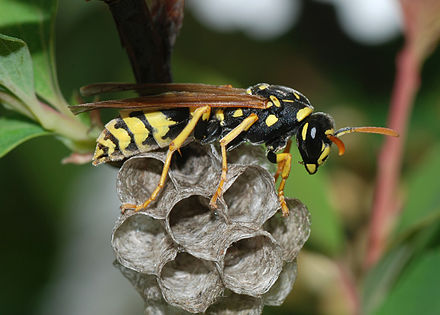
A Remarkable Wasp Parasite Bugbitten
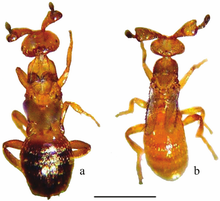
Melittobia Australica Wikipedia
The Wasp Life Cycle When Do Wasps Die Off Hullternative

Wasps Yeah They Can Mind Control Scientific Scribbles
Ever Seen A Mantidfly Bug Squad Anr Blogs

Parasitoid Wasp Simple English Wikipedia The Free Encyclopedia

Life Cycle Of The Host And The Parasitoid Inset Shows The Picture Of A Download Scientific Diagram

